Efficacy and safety of ivermectin for COVID-19: A systematic review and meta-analysis
Alok Singh, Pranav G Sheth, Suryaprakash Dhaneria, Dhyuti Gupta
Department of Pharmacology, All India Institute of Medical Sciences, Raipur 492099 Chhattisgarh, India
ABSTRACT
KEYWORDS: Ivermectin; SARS-CoV-2; COVID-19; Drug repurposing; WHO
Significance
Ivermectin is claimed to be beneficial in treatment and prophylaxis of COVID-19 illness. The authors via the systematic search and meta-analysis assessed the benefits of ivermectin in COVID-19. By the present study, authors have tried to answer whether the ivermectin should be recommended for the management of COVID-19 illness. The study will be helpful in promoting rational use of ivermectin in COVID-19.
1. Introduction
COVID-19, caused by severe acute respiratory syndrome coronavirus 2 (SARS-CoV-2) virus, was declared a global pandemic by World Health Organization (WHO) in March 2020[1,2]. The disease was first detected in December 2019 and has led to more than 4.6 million deaths globally[3,4]. The incubation period of this disease can vary from 2-14 days and result in either symptomatic or asymptomatic infection. The symptoms, usually of mild-tomoderate intensity, can range from fever, cough, shortness of breath,muscle ache, loss of taste and smell and fatigue to gastrointestinal manifestations. There is associated development of hypercoagulable state and lung damage in case of severe infection, which can progress to interstitial pneumonia, acute respiratory distress syndrome, and subsequently to multiorgan failure[3-6]. To date, no effective therapeutic agent could be discovered and proved to be curative. Moreover, in such situations identifying and developing a new therapeutic molecule is both time-consuming and economically challenging, as well as providing vaccination cover to all will take years. In such scenario, identifying the already marketed drugs which could be repurposed in managing this syndrome may prove to be more fruitful and feasible, especially in developing countries.To list a few repurposed drugs which are already being evaluated for this said condition are antivirals (lopinavir/ritonavir, remdesivir,favipiravir), antimicrobials (doxycycline, azithromycin, ivermectin),antimalarial (hydroxychloroquine), anti-IL6 receptor antibody(tocilizumab), glucocorticoids, antithrombotic and so on[7,8].
Recently, the spotlight has shifted onto a widely used antihelminthic drug, ivermectin, which has demonstrated antiviral activity against SARS-CoV-2 in-vitro[9]. The mechanism behind this activity is the ability of ivermectin to inhibit importin α/β1 (a type of karyopherin)-mediated transport of viral proteins back and forth host cell nucleus, thus occupying the host cell machinery for replication and generation of viral progenies[8]. The usual dose of this drug is 0.2-0.4 mg/kg, with a half-life of about 18 hours, and undergoes hepatic metabolism. Its bioavailability gets increased if consumed after a high-fat meal. Furthermore, the commonly encountered adverse effects of its use are dizziness, pruritus,diarrhea, nausea, and other gastrointestinal effects[10]. Considering the different mechanisms of antiviral activity, wider safety margin,and cost-effective treatment offered by ivermectin, it does become a potential therapeutic agent that can be explored in the management of COVID-19, either prophylactically or curatively[8,11]. The dosing schedule for the same has been proposed as 200 mcg/kg once a day for 3-5 days[12,13]. Nevertheless, for ivermectin to demonstrate the similar anti- COVID-19 activity as observed in-vitro, the dose has to be escalated up to 100 times of the approved dose for human use.Also, its concentration in lung tissue is remarkably less than the concentration at which 50% viral inhibition occurred in-vitro[14,15].International organizations like World Health Organization(WHO) have recommended restricted use of this anti-helminthic to clinical trials only, yet there is rampant use of ivermectin in many countries[16,17]. Since the data regarding using this drug, either as prophylactic or curative in COVID-19, is insufficient, there is a need to conduct well-designed and competent clinical trials to grasp ivermectin's exact role and effectiveness in subduing this pandemic[18]. Taking into account these disparities, the competency of ongoing trials for ivermectin as well as the urgent need for evidence-based guidelines for tackling this global pandemic, the authors planned to conduct a systematic review to substantiate the rationality behind the use of ivermectin either as a prophylactic or curative agent in the management of COVID-19 disease.
2. Materials and methods
The current meta-analysis was performed as per the Guidelines of preferred reporting items for systematic reviews and meta-analyses statement, for which ethical permission is not essential[19].
2.1. Literature search and data extraction
Two of the authors performed the systematic search (A.S. and P.S.) among the databases PubMed, Cochrane library, Clinical Trial Registry (https://clinicaltrials.gov/), and preprint servers like medRxiv.org and research square for a timeline from 2020 to May 2021 using the keywords: "COVID-19 and ivermectin;" with the filter "trials." Previously conducted meta-analyses were also searched for discussion.
2.2. PICOS criteria
Patients: Adults COVID-19 illness (mild to severe).
Intervention/Comparator: Ivermectin (12-48 mg/d) was used as an add-on therapy to standard care. As the pandemic is going on, we included all the studies which assessed the efficacy of ivermectin in prophylaxis and treatment of COVID-19 disease administered as a tablet, elixir, or topical formulation. The studies comparing ivermectin with other unproven drugs in the management of COVID-19 illness were not included.
Primary outcome:
?The proportion of patients who showed progression of the disease or clinical worsening.
Secondary outcomes:
?Mean duration of hospital stay.
?Mean duration of resolution of symptoms or clinical recovery.
?The proportion of patients who were tested positive on days 5-7.
?The mortality rate in severe/critical COVID-19 patients.
?The proportion of contacts who were tested positive with RT-PCR(prophylaxis i.e., prevention of COVID-19 infection in contacts of COVID-19 positive patients.).
?Incidence of serious adverse events.
Study design: All the clinical trials assessing the efficacy of ivermectin in prophylaxis and treatment of COVID-19 were included. The demographic data and essential characteristics of clinical trials were also documented. The data extraction was performed by three of the authors and duly verified with one another.
2.3. Risk of bias assessment
The individual trial was checked for its quality by performing the risk of bias assessment as per Preferred reporting items for systematic reviews and meta-analyses guidelines and shown in the forest plot[20].The trial quality was also assessed using Jadad's scale. In Jadad's scale, we analyze randomization (0-2 points), blinding (0-2 points),and dropouts and withdrawals (0-1 points). Five is the maximum score for a trial, and the trials with score 3 are considered high quality[21].
2.4. Statistical analysis
We assessed the odds ratio (OR) and mean difference (MD) with a confidence interval (CIs) of 95% for dichotomous and continuous variables, respectively. In case of any missing data (standard deviation), the highest values were imputed from other studies for the same parameter[22]. In few studies, the in-place of mean and standard deviation (SD), median, and range were mentioned; hence mean, and SD was derived from given data[23].I
statistic (I
>50% indicated heterogeneity) was applied to assess heterogeneity among the included studies[24]. This meta-analysis was performed using a random-effect model with Review Manager (Rev Man) v5.4 for windows. Furthermore, we obtained a funnel plot and performed egger's test to assess publication bias[25].3. Results
3.1. Literature search and study characteristics
Initially, the authors found 128 records, and after the removal of duplicates, 107 were left. On further scrutinizing, 28 studies were sorted for analysis[26-53]. Out of 28 studies, two studies were excluded as they were retrospective in nature and eventually 26 prospective studies were left (Figure 1)[26,27]. On further screening,four studies were excluded as the endpoints were not similar to the desired endpoints[29,46,47,53]. One study was excluded due to incomplete information available to authors[41]. Another study comparing the outcome of different treatment protocols was excluded as it has different endpoints[35]. Two more studies were not included due to the faulty trial design comparing ivermectin(investigation agent) effects with other therapy of unproven benefits[33,40]. Lastly, in the study, a comparison of combinations of different drugs was assessed against ivermectin; hence the study was excluded from further discussion[39]. The relevant characteristics of the 26 prospective studies have been mentioned in Table 1[28-53]. Six out of 17 included studies scored <3 in Jadad's score[30-32,34,42,51].Only five studies were free of significant bias[37,38,45,48,50]. Among the included studies, 2928 patients (24-600) were enrolled, and 42.4% were female. The diagnosis of COVID-19 among all the studies was established based on the RT-PCR test. In a few studies,the standard deviation (SD) for continuous data was missing; hence these values were imputed from other studies with maximum values being considered[32,34]. Similarly, few studies did not have mean and SD in results, so they were calculated from median and range[37,38,49].
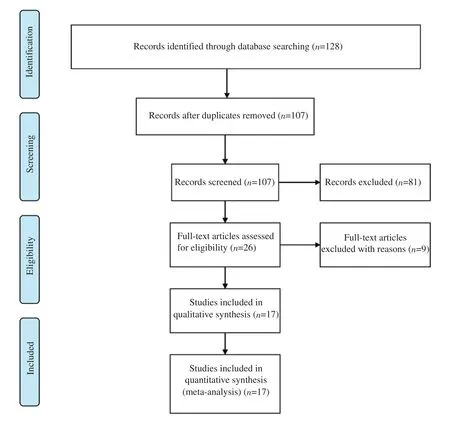
Figure 1. Flow diagram of study selection process.
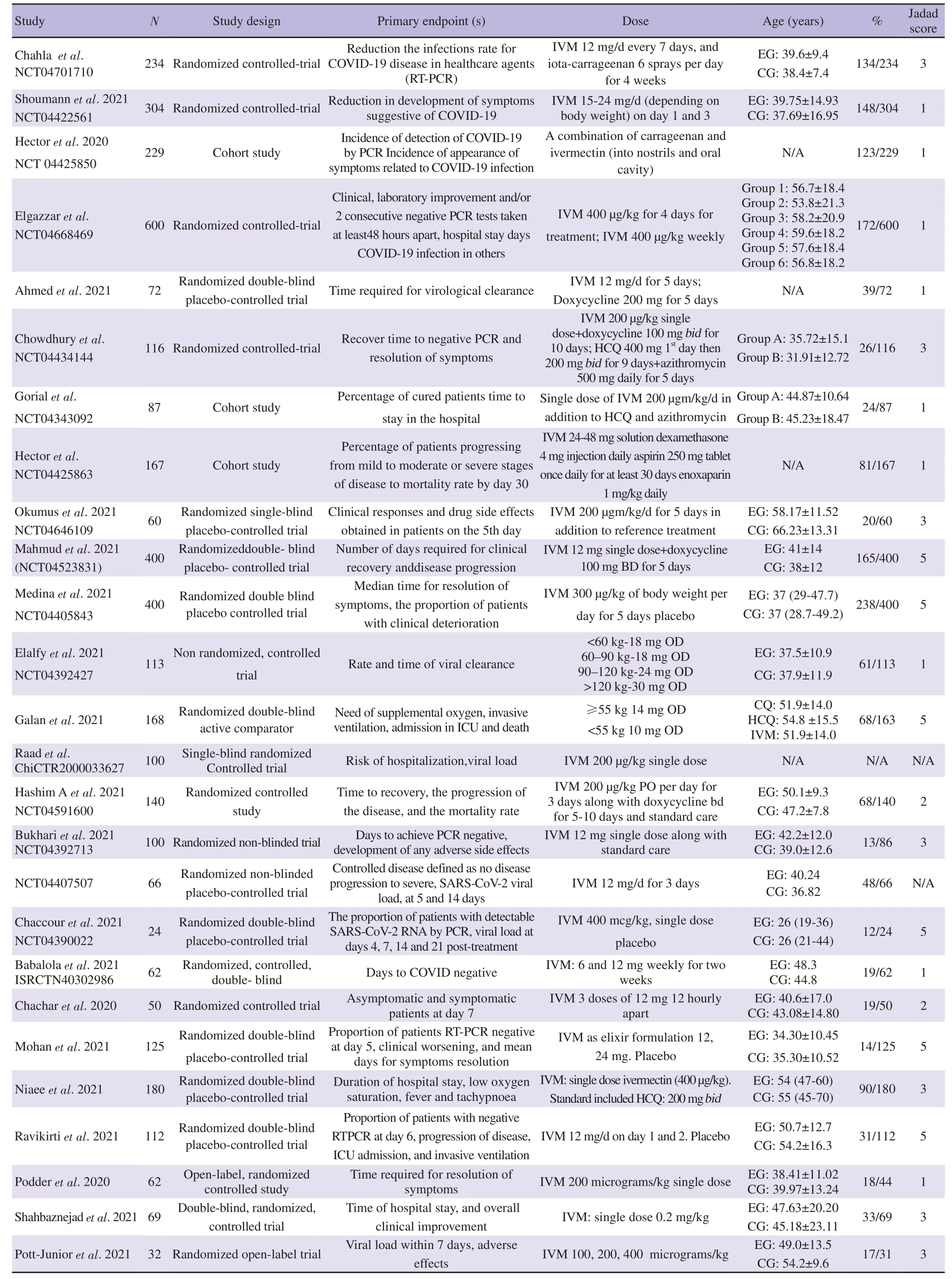
Table 1. Salient features of included clinical trials[28-53].
3.2. Primary outcome
Based on the funnel plot, we did not observe any publication bias(Figure 2). Same was substantiated by Egger's calculation [-0.247933 (95% CI -1.925825-1.429959), P=0.6702]. The heterogeneity was not observed [I
=0% (95% CI 0%-64.1%), P=0.99]among these trials (Figure 3). In the ivermectin group, proportion of patients who showed progression of the disease or clinical worsening was significantly lower than standard therapy (OR 0.47; 95% CI 0.30-0.74; P=0.001) (Figure 3).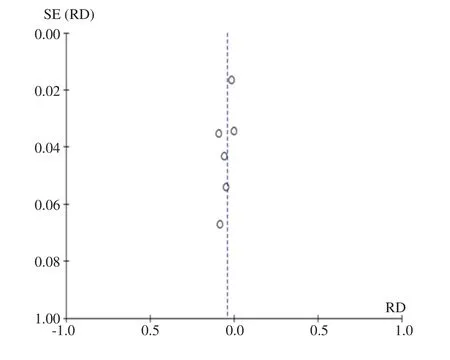
Figure 2. Funnel plot for primary outcome.
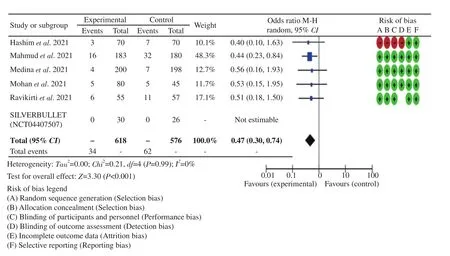
Figure 3. Forest plot for proportion of patients who showed progression of the disease or clinical worsening
3.3. Secondary outcomes
There was significant difference was observed in mean duration of hospital stay and mean time to resolution of symptoms [MD=-2.21,(95% CI -3.23--1.19), P<0.00001](Figure 4); MD=-1.16, 95% CI-1.52--0.81, P<0.00001 (Figure 5)]. There was no significant difference was noted in proportion of patients who were tested positive on day 5-7 and similar trend was noted in mortality rate in severe/critical COVID-19 illness (OR 0.37, 95% CI 0.10-1.29, P=0.12) (Figure 6);(OR 0.45, 95% CI 0.17-1.18, P=0.10) (Figure 7). The ivermectin group was superior in the prophylaxis of COVID-19 infection in contacts of COVID-19 positive patients than the standard group, which used only personal protective equipment, and the difference was statistically significant (OR 0.13, 95% CI 0.05-0.30, P<0.00001)(Figure 8). The detailed analysis of evidence is present in Table 2.Funnel plots for individual outcome are available as supplementary material.

Figure 4. Forest plot for mean duration of hospital stay.
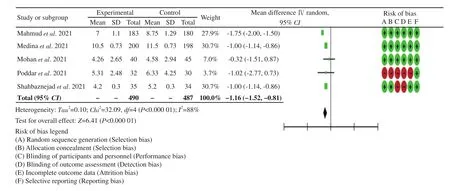
Figure 5. Forest plot for mean duration of resolution of symptoms or clinical recovery.

Figure 6. Forest plot for the proportion of patients who were tested positive on day 5-7.
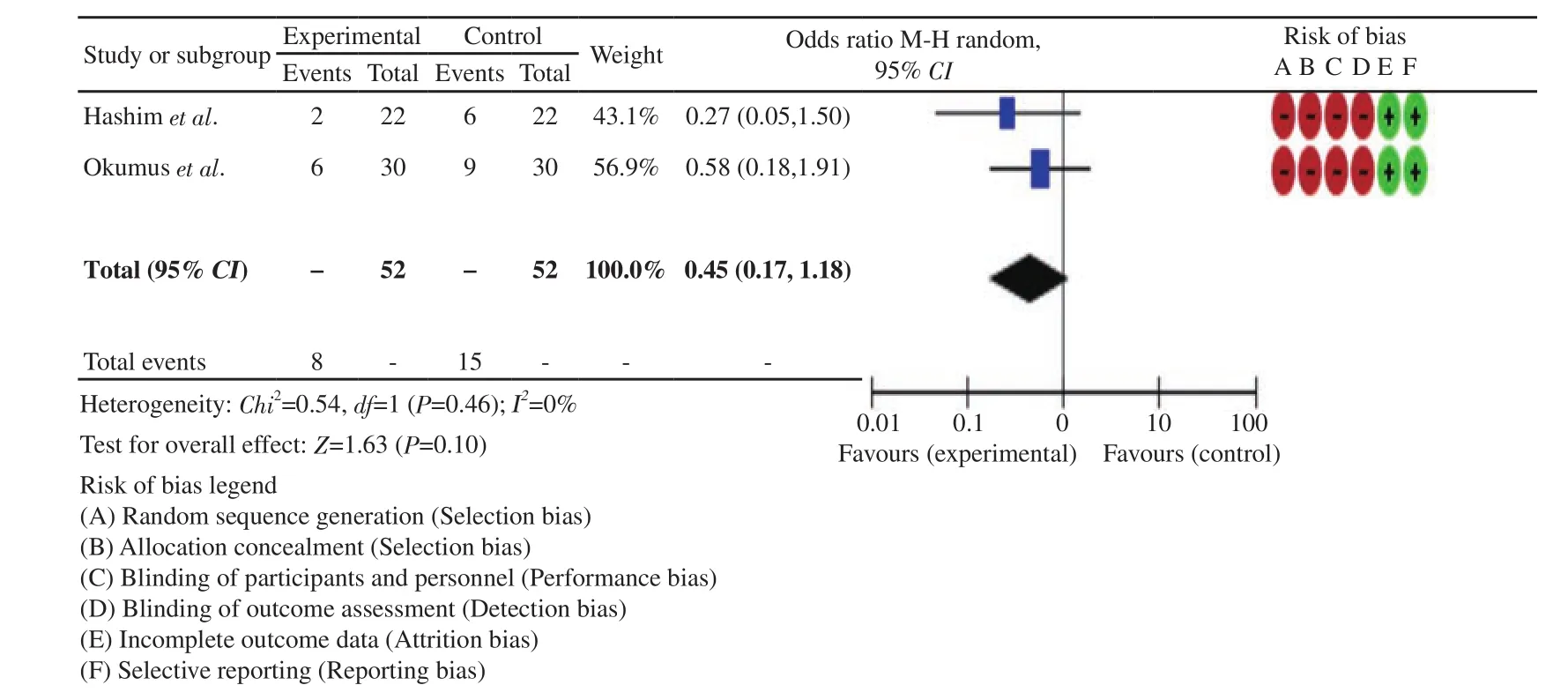
Figure 7. Forest plot for the mortality rate in severe/critical COVID-19 patients.
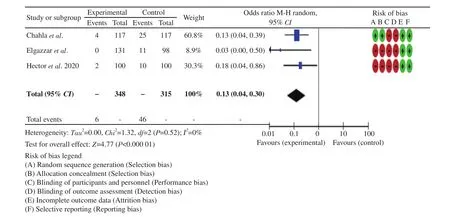
Figure 8. Forest plot for the proportion of contacts who were tested positive with RT-PCR (prophylaxis).

Table 2. Certainty assessment andsummary of findings.
The meta-analysis of the incidence of serious adverse events was not performed, however, only five studies mentioned the serious adverse events[35,37,38,40,44]. The study by Hector et al. has reported a serious adverse event (gastric ulcer) that was attributable to dexamethasone[35]. In a study, two patients discontinued the ivermectin due to erosive esophagitis[37]. In another study, four serious adverse events were observed, but none of them was attributable to ivermectin[38]. The study conducted has reported anemia (Hb<8 g/dL) and leucopenia (<1500/mm)[40]. A serious adverse event (encephalitis) was reported in one of the trials[44].
4. Discussion
The present meta-analysis aimed to assess the role of ivermectin as add-on therapy in the management of treatment and prophylaxis of COVID-19 illness. The study included the clinical trials published or available up to 31May 2021. In our results, most of the patients were male, following the usual epidemiological trend of COVID-19 illness[54]. The total number of patients included in the meta-analysis(n=2928) is less than the gravity of illness worldwide, as more than 170 million people have been infected[4].
In many outcomes that we have selected for analysis, ivermectin as an add-on to standard care was effective. The studies included in assessing the proportion of patients showing the progression of the disease, mean days for resolution of symptoms, and duration of hospitalization have significant shortcomings that are worth mentioning[32,34,37,38,42,48-50,52]. The major limitation of all the studies is the lack of sample size estimation before the start of the study, and all had a small sample size. Though the disease progression was the endpoint in the studies, the method to judge the progression was not the same. Two of the studies included the WHO ordinal scale to assess progression, while others relied on the symptoms characteristics of different stages of the disease. Results are further complicated by inconsistent dosing schedules and variable routes of administration. It ranged from a single dose to 2-5 days in variable doses, i.e., 200-300 μg/kg or 12-24 mg/d. The formulation was the same except one where it was administered as an elixir[48]. Furthermore, the use of doxycycline along with ivermectin makes the comparison more complex[37,42]. These factors are the potential sources of heterogeneity. Though the studies included for this endpoint are homogenous, a single study has disproportionate weight and contributes to 48.3% weight alone[37]. All studies included for this comparison are of good quality except one which seems to be at high risk for multiple biases, i.e., selection, allocation, and detection bias[42].
Ivermectin as an add-on has also shown a significant prophylactic role in COVID-19 infection; however, it also requires careful evaluation of results. All the three studies included are at high risk of bias[28,30,31]. The issue of small sample size and its calculation remains the same. Though homogenous, one study has got disproportionate weight which may alter the results[28]. The variability of dose, duration,and route is also different, which is further complicated by simultaneous administration of carrageenan[28,30]. Hence, these significant results must be scrutinized before formulating the policy and recommendations.
Ivermectin failed to show any significant effect in other outcomes, i.e., RTPCR positivity rate after 5-7 days, and mortality rate. In a previous meta-analysis, the mortality benefit was observed by authors, but we did not observe any significant benefit as we included studies that assessed mortality in severe COVID-19 illness[55]. Since most patients with mild to moderate illness recover with appropriate medical support, there is no point in assessing mortality in mild to moderate disease.
Ivermectin is known to be remarkably safe[8]. In our review, we also noted very few serious adverse events attributable to the drug substantiating its record of safety. The more significant safety margin adds to the acceptability of drugs in the general public. Wider safety margin must not be the excuse for rampant and irrational use of ivermectin in COVID-19, especially in under-developed and developing world. The ivermectin is not recommended in the age group <15 years, and it should not be used in pregnant females and preferably avoided in nursing mothers[10].
Two retrospective case-control studies were also screened during evaluation, though the studies were well-designed and the outcome was favorable for ivermectin[26,27]. Since the case-control studies stand very low in the hierarchy of evidence, their data cannot be considered in formulating policy[56]. The fact which goes in favor of ivermectin as a prophylactic agent is the association of less COVID-19 incidence in few parts of the world (Africa), where it is given routinely as mass administration[57].
Another fact that is worth discussing is the concentration in which the ivermectin inhibits viral replication. It was estimated that ICof ivermectin is about 35 times higher than theC
of the drug when administered in approved doses, and it is doubtful that desired concentration can be achieved practically despite having a wider therapeutic index (10 times up to 2000 μg/kg)[58]. This is an essential factor that needs consideration in the interpretation of significant findings.Our study supports the WHO mandate, i.e., the use of ivermectin in COVID-19 is not recommended except in clinical trial settings[16].The USFDA and EMA have advised not to use the ivermectin to prevent or treat COVID-19 disease[59,60]. In India, ivermectin has been used widely for COVID-19; however, it is recommended under low certainty of evidence[61,62]. In different parts of the world, the irrational use of ivermectin and other unproven therapies is widespread during the pandemic[61,63-65]. Self-medication has emerged as a significant problem in the pandemic, especially in countries with poor regulation over drug sales, and ivermectin is also not an exception[66]. Fortunately, the ivermectin has a high therapeutic margin, the adverse effects encountered are comparatively less.
Despite vigorous study of existing literature, we are still unsure of dosage and duration of administration of ivermectin. Considering the shortcomings (duly mentioned in forestplots and Table 2), we also propose the evidence of lowcertainty for the use of ivermectin as an add-on in management and prophylaxis of COVID-19 illness.
Authors have tried to make a valid comparison by establishing uniform endpoints from the existing literature. The standard care was defined in many studies as per their local guidelines; standard care is not the same in each study. The availability of a fewer number of studies is another limitation. We have not assessed the effects of co-morbidities on the outcome of COVID-19. A majority of studies involved patients of mild to moderate severity; the findings cannot be generalized. Meta-analysis of serious adverse events was not performed.
Ivermectin is still being used in many parts of world for COVID-19 without proper evidence. Authors have tried to create evidence to promote the rational use of ivermectin. Though the favorable effects of ivermectin in some endpoints have been observed, the widespread use of ivermectin should not be promoted due to the apparent limitations of the studies. More vigorous studies with an appropriate sample size are required so that a valid conclusion can be drawn.
Conflict of interest statement
The authors declare that there is no conflict of interest.
Authors’ contributions
AS and SPD planned for the study. AS and PG performed the literature search, while AS, PG, and DG performed data extraction.SPD critically evaluated the manuscript. The final manuscript approved by all the authors.
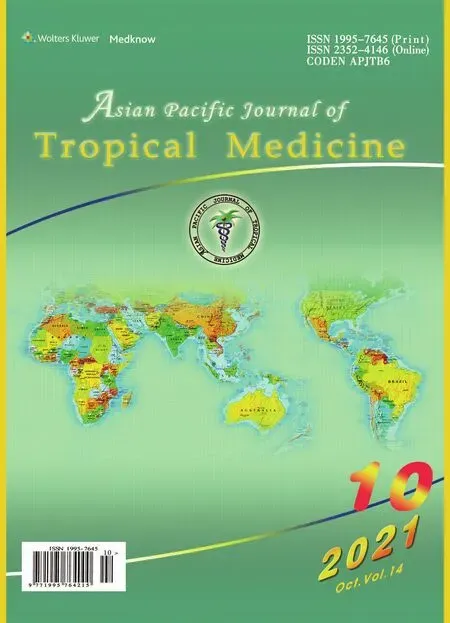 Asian Pacific Journal of Tropical Medicine2021年10期
Asian Pacific Journal of Tropical Medicine2021年10期
- Asian Pacific Journal of Tropical Medicine的其它文章
- Clinical, biochemical and imaging characteristics of adrenal histoplasmosis in immunocompetent patients in a non-endemic area: A case series
- Prediction of malaria cases in the southeastern Iran using climatic variables: An 18-year SARIMA time series analysis
- Detection of dengue virus serotype 3 in Cajamarca, Peru: Molecular diagnosis and clinical characteristics
- Prevalence of non-tuberculosis mycobacteria among samples deposited from the National Tuberculous Reference Laboratory of Iran (2011-2018)
- Favipiravir and its potentials in COVID-19 pandemic: An update
- Nix-TB and ZeNix trials: Paving the way for shorter regimens for drug-resistant tuberculosis
